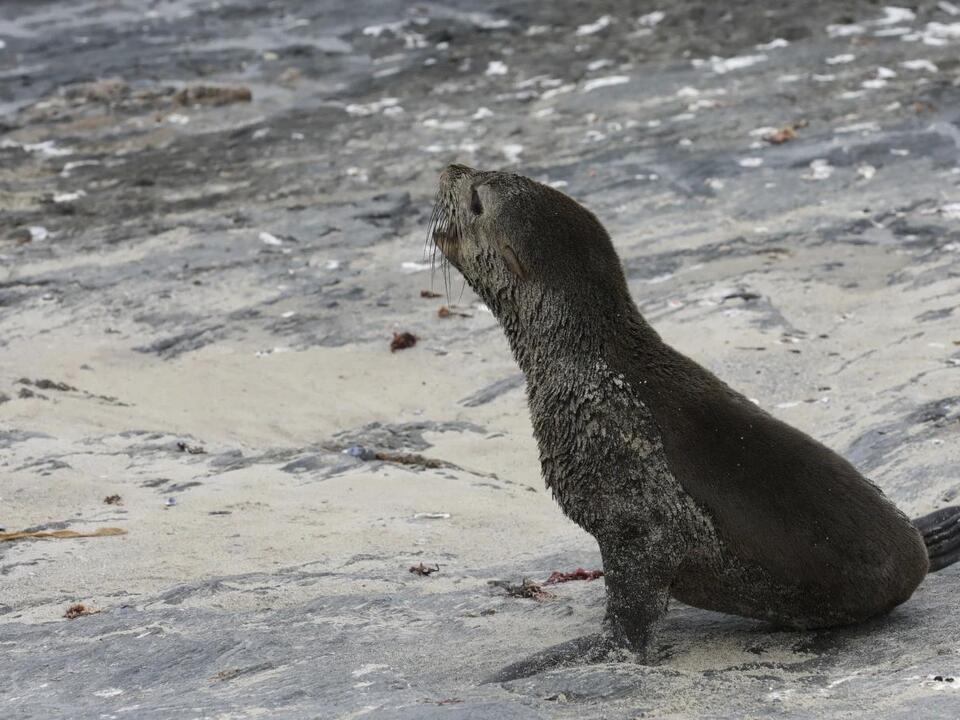Physical Address
304 North Cardinal St.
Dorchester Center, MA 02124
Physical Address
304 North Cardinal St.
Dorchester Center, MA 02124

CAPE TOWN, South Africa — A significant outbreak of rabies has been identified among Cape fur seals, marking a concerning first instance of the virus spreading in marine mammals, according to scientists in South Africa.
So far, at least 24 Cape fur seals have either been found dead or euthanized along South Africa’s west and south coasts, all testing positive for rabies, state veterinarian Dr. Lesley van Helden confirmed.
Rabies is a viral disease that affects mammals and can be transmitted to humans. Once clinical symptoms manifest, it is almost always fatal. The virus typically spreads through saliva, primarily via bites, but can also be transmitted when animals lick or groom each other.
For many years, rabies has been recognized in various wild animals, including raccoons, coyotes, foxes, jackals, and domestic dogs. However, experts noted this week that rabies had never before been documented as spreading amongst marine mammals.
The only previous incident of rabies in a marine mammal occurred in the early 1980s in a ringed seal observed in the Svalbard islands of Norway. In that case, researchers determined the seal was likely infected by a rabid arctic fox, and there was no indication of rabies transmission among seals in that region.
The discovery of rabies in Cape fur seals in South Africa began in June when a dog was bitten by a seal at a beach in Cape Town. Following this incident, the dog tested positive for rabies, prompting officials to conduct rabies tests on brain samples from 135 seal carcasses collected since 2021. In addition, approximately 20 new samples were gathered, yielding further positive results.
Researchers are currently investigating how rabies was transmitted to the seals, the scope of its spread among seal colonies, and potential containment measures.
“It’s all very, very new,” said Greg Hofmeyr, a marine biologist studying seals in South Africa. “A lot of research is required… there are a lot of unknowns here.”
There are an estimated 2 million seals migrating along Africa’s southern and western coasts between South Africa, Namibia, and Angola. Dr. van Helden speculated that the initial transmission of rabies to seals may have originated from jackals in Namibia, as these animals are known to prey on seal pups along the coastline.
Genetic analyses indicated that the rabies virus found in the seals corresponds with strains identified in black-backed jackals from Namibia. Furthermore, the data suggests that rabies is circulating within the seal population since the majority of the virus sequences were closely related, indicating transmission through bites among seals.
These seals frequently inhabit areas close to human populations, particularly on beaches around Cape Town. As such, city officials have issued warnings to residents, as stated by Gregg Oelofse, the head of coastal and environmental management in Cape Town.
Concerns have been raised by authorities over reports of aggressive seal behavior and an increasing number of seal attacks on humans, although no instances of rabies have been reported in people stemming from these attacks.
Oelofse mentioned that city officials have begun vaccinating small groups of seals in two popular harbors where these animals are considered an attraction. Tests have revealed that at least one seal carcass collected in August 2022 had rabies, indicating that the virus has been present in the seal population for a minimum of two years.
“It’s been here for a while longer than we’ve known about it,” Oelofse remarked.
Experts caution that many variables remain uncertain. Predicting the long-term transmission dynamics of rabies is challenging. Dave Daigle, a spokesperson for the U.S. Centers for Disease Control and Prevention, noted previous instances where rabies strains have appeared in new hosts only to die out shortly after. For example, gray foxes in the U.S. were found to transmit the raccoon rabies virus variant for two years before transmission ceased.
While U.S. public health officials are monitoring the situation in South Africa, they have yet to observe clear evidence indicating that rabies in seals will become a long-term concern.
Additionally, whether a vaccine will be effective specifically in seals remains an unanswered question. Although it has never been tested on seals, experts believe it should work. Yet, logistical challenges remain in vaccinating a significant number of seals that predominantly reside in the ocean and migrate over extensive distances along the coastline.
Collaboration between South African officials and international experts is ongoing. Hofmeyr emphasized the potential risk if other seal species come into contact with Cape fur seals and travel elsewhere, highlighting that while the chances of transmission to other regions are low, the implications could be significant.
Source: AP News



